I’ve tried several different types of corn for our pigs with interesting results. We’re always trying to find a better option.
The best corn for pigs is either finely ground or fermented to maximize digestibility. A soaked or fermented corn is considered better than dry corn, even if ground. Higher protein, heirloom corn is preferred but more expensive. Most pig feed contains low-protein hybrid corn.
Whole, cracked, or ground corn are all different for pigs. Hybrid vs heirloom corn also poses an important difference.
Cracked Corn vs Whole Corn for Pigs
Cracked corn is marginally better than whole corn for pigs. It’s slightly more digestible but can lead to more wasted feed. Whole corn is more easily eaten off the ground if it’s spiled. There’s about a 2-3 percent difference in digestibility of dry whole corn and dry cracked corn with pigs.
The research and evidence I’ve seen over the years all say that grinding or otherwise processing corn improves Its digestibility. That means less can be used. If you are feeding whole corn to pigs, they’ll need to eat a bit more to keep up the same growth. This does get a little complicated here.
Basically, whole corn is about 5 percent cheaper than cracked corn. Pigs need to eat a few percent more whole corn than cracked corn. That eliminates most of the feed cost savings. So, between the two corn options, both produce a similar feed bill.
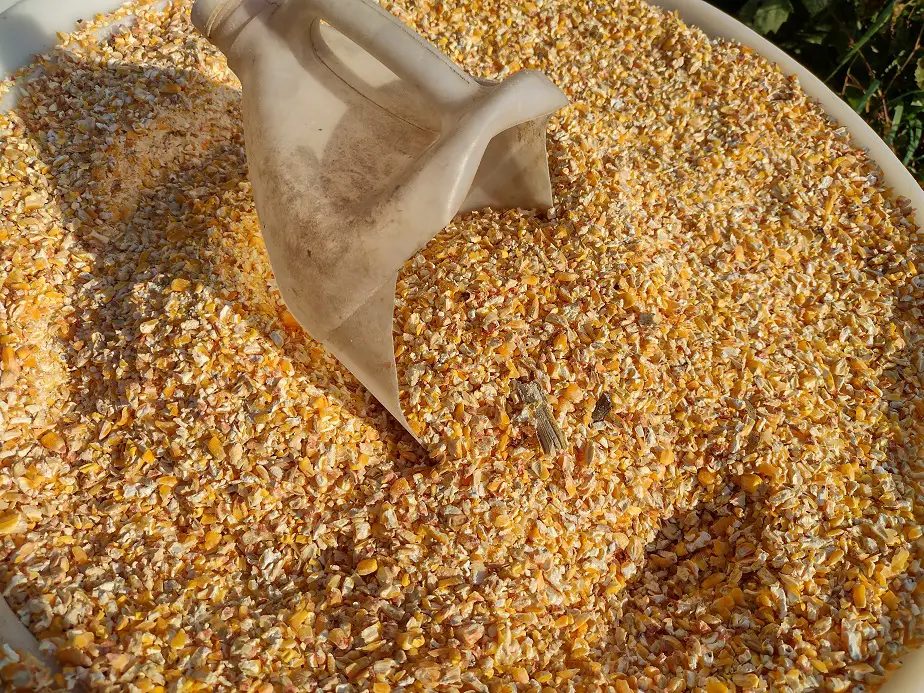
I feed my pigs cracked corn. It’s not much better nutritionally, but I get it for the same price from the farmer so it’s a no-brainer. So, whole corn is a little cheaper but a little more is needed. Cracked corn is needed in slightly smaller amounts, but is slightly more expensive.
How about finer ground corn? well, research shows that there’s around a 10 percent difference in digestibility between whole corn and ground corn for pigs. That’s enough to consider.
A proper butcher hog ration (850 pounds of feed) will include around 650 pounds of corn. Whole corn would require 10% more. Currently, corn in the upper midwest is $0.26/lb. So that’s $16.90 more to feed a pig. Not really a lot, but that’s money to use elsewhere and it adds up with multiple pigs.
Now, if you’re growing your own corn you might not have a decent mill or grinder to use. That’s a great time to just feed whole corn. In fact, you can feed corn still on the cob. No need for a shelling machine, pigs will eat the kernels off the ear.
We grow a few hundred pounds worth of corn to feed the pigs, and don’t bother grinding it first. The feed savings (10 percent) is not worth the cost of buying and maintaining a $500 to $1,000 grain grinder. I do ferment the corn, which is a whole different thing. More on that in a minute.
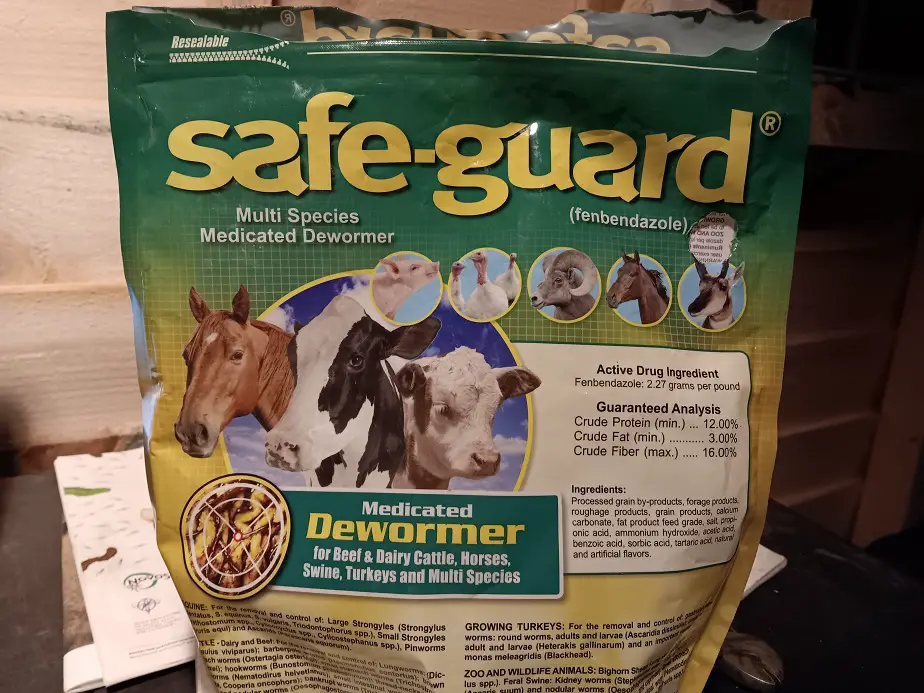
One thing you need for pigs, no matter your raising system, is a parasitic worm treatment. The best swine dewormer is Fenbendazole. It’s known by the brand name Safeguard. Safeguard is available as a medicated corn/alfalfa pellet. It’s the only way I can worm my pigs since they won’t stand still for an injection of Ivermectin. It’s easy and cheap.
- There is a stronger pellet for swine only. Here it is on Amazon
- There is a weaker pellet for general barnyard livestock, including swine. Here it is on Amazon.
I use the multi-species version because it’s what’s available in my local store and I can use it for my chickens too. It’s the most effective swine wormer and the easiest to administer. I use it on all weaned piglets and adults twice a year. Don’t go without it.
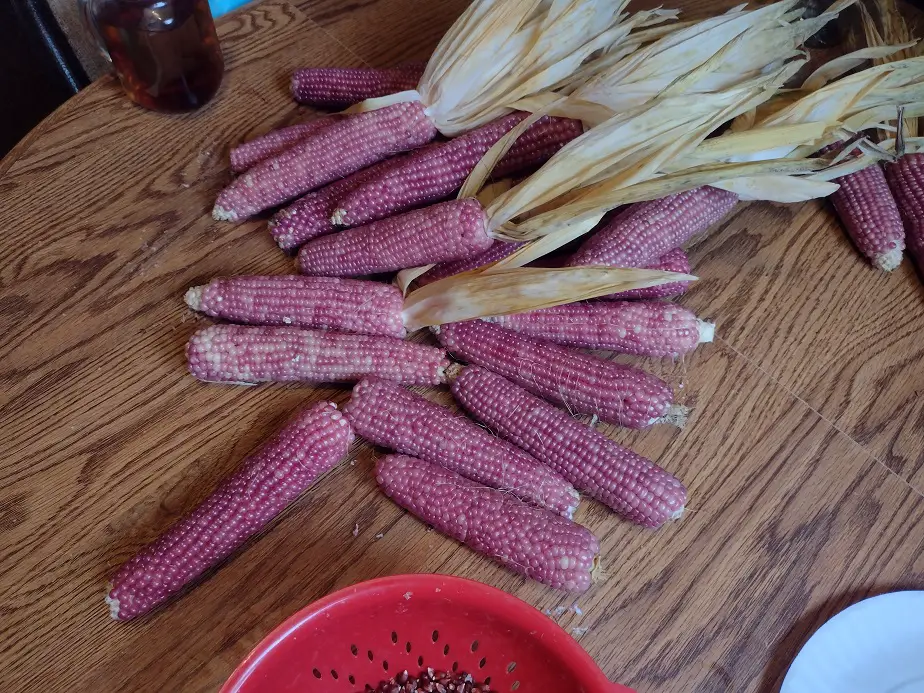
Heirloom vs Hybrid Corn for Pigs
Hybrid feed corn is higher in starch but lower in vitamins and protein than most heirloom feed corn. Hybrid corn is often more of a nutritionally empty corn. Heirloom corn tends to have a higher vitamin content, mainly vitamins A, B, E, and K, as well as other healthful chemicals.
Pigs raised on hybrid dent corn need more vitamins, usually added in the form of synthesized vitamin powder to the feed mix. The classic yellow hybrid dent/field corn has a lot of starch, but not a lot else. We grow flint corns for their higher protein levels and higher nutritional diversity.
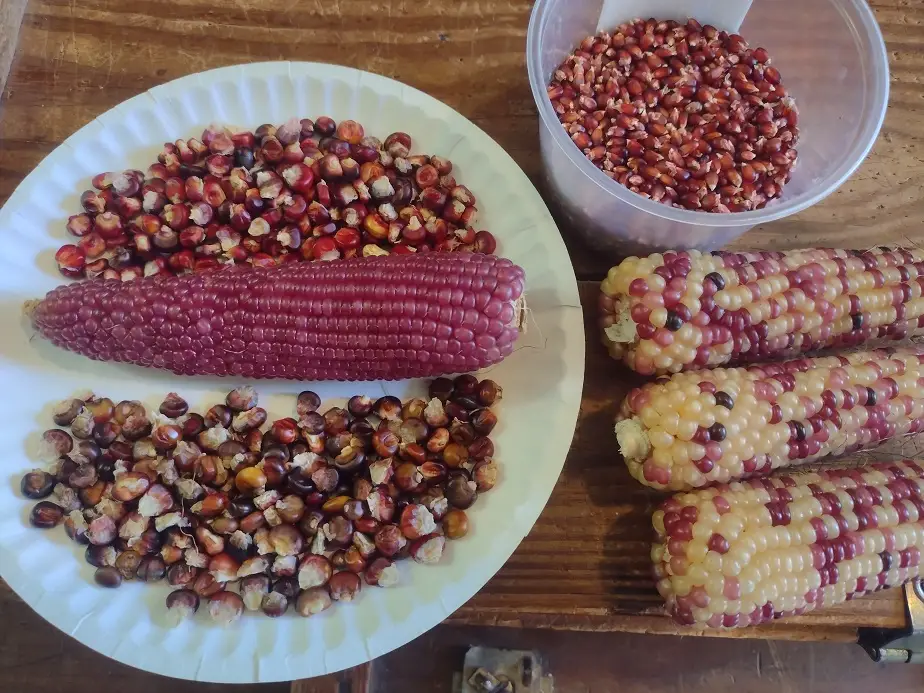
The Best Heirloom Corn for Pigs
Here’s a list of Heirloom corns I would consider growing for pigs.
- Wade’s Giant (multi-colored flint corn)
- Trucker’s Favorite (dent corn)
- Blood Butcher (dark-red dent corn)
- Jimmy Red (dark-red dent corn)
- Atomic Orange (deep-orange soft flint corn)
- Ried’s Yellow (deep-yellow hard dent corn)
One particular type that I’ve grown for a few years and recommend strongly is Wade’s Giant flint corn. It’s a very nutritionally diverse corn with 65 percent more protein than the corn I can buy at the feed store. It is a 100 to 120-day corn.
Wade’s Giant was developed as an ornamental but has serious feed capabilities. With fertile soil, it outproduces the hybrid corn around here. I plan on growing it every year.
I also grew Early Pink, which grew well for a short season corn. It matured in about 80 days, well before my other corn which gave us an extended harvesting period. Early pink was quite hardy, but not the most productive in this year’s summer drought. Wade’s Giant produced a lot more feed.
Corn with darker or bolder colors contains more phytonutrients. Things like beta carotene (converts into vitamin A), which is found in orange corns, and anthocyanin (a potent antioxidant), which is found in red and blue corns are good for pig health as well as the flavor and quality of pork.
These nutritional compounds are found in the plant pigments so darker, stronger shades of corn are more beneficial to animal health and a variety lends to a better diet. My favorite types of corn are multicolored varieties like Wade’s Giant. It has some of every color I’ve ever seen in corn except green.
Next year I’m growing two new varieties, Atomic Orange (the highest protein corn) and Jimmy Red (a productive, high-anthocyanin corn). If you are going to grow corn for your pigs, I suggest growing two different colors.
I know most people think corn is corn, but it’s just not so. A diet with more natural pigmentation is a healthier diet. healthy diets keep animals healthy and happy and make more healthful, delicious meat.
Fermented Corn is Better than Dry Corn
Fermenting corn makes it more digestible, releases locked-up nutrients, adds missing proteins, and increases vitamin content. All types of corn benefit nutritionally from basic liquid fermentation. Basic corn fermentation is just soaking it in water at room temperature for 3 days.
fermented corn is more digestible than finely ground corn, improves pig’s gut health, and significantly lessens gastric lesions that can cause unexpected death in pigs. It doesn’t take any fancy equipment, just corn, water, and buckets or barrels with lids.
Related articles:

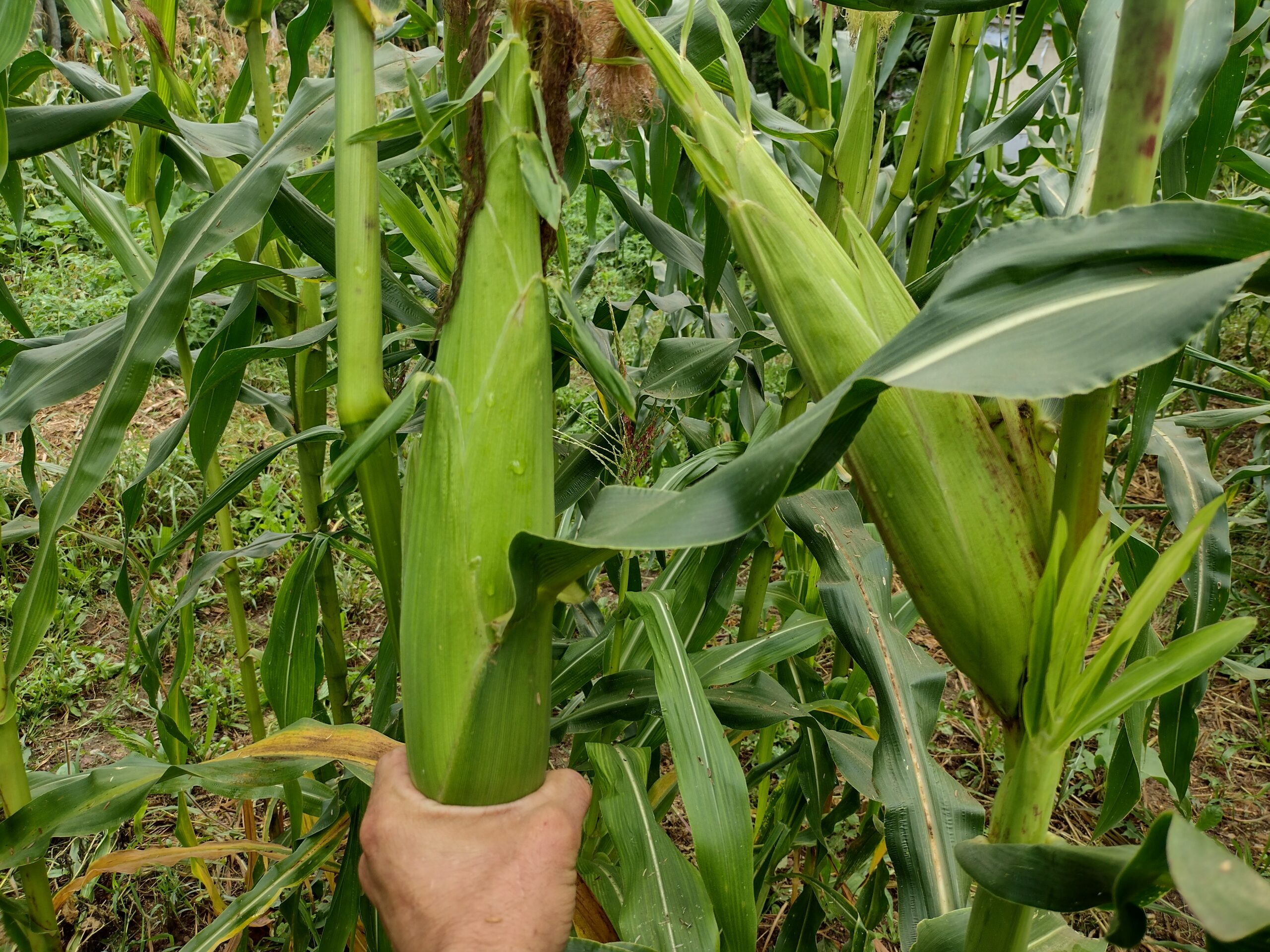
Thank you for your insightful article. It’s of great help. Keep it up. I also want to enquire how I can get these recommended seeds to grow. My email is gdarko235@gmail.com. Thanks
where can you purchase the atomic orange seed in 1lb or more.
To my knowlage, no one sells it in bulk.